Office interior design has evolved over the years, and today's modern offices are designed to be functional and aesthetically pleasing. While functionality is critical in office interior design, creating a visually appealing space is equally important. Art can play a significant role in enhancing the ambiance of an office, making it more welcoming and comfortable. Here are some ways to incorporate art into office interior design.
Wall Art:
Wall art is the easiest and most common way to incorporate art into an office interior design. You can hang paintings, photographs, or prints on the walls to add color and interest to the space. It's important to choose art that reflects your company's values and brand. For example, if you're in the tech industry, you may want to choose contemporary art pieces that reflect innovation and creativity.
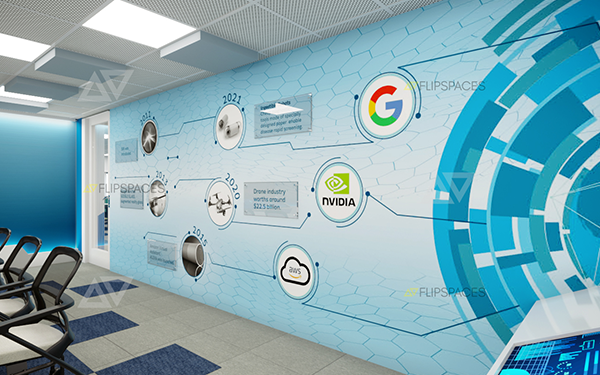
Sculptures:
Sculptures are an excellent way to add three-dimensional art to your office interior design. You can choose sculptures made of various materials like metal, wood, or stone. They add texture and depth to your space, making it more interesting. You can place sculptures in the lobby, conference rooms, or even on desks.
Murals:
Murals are large paintings that cover an entire wall or part of a wall. They are an excellent way to add a significant impact to your office space with commercial office interior design. Murals can be custom made to reflect your company's brand or values. They can also be used to create a specific atmosphere in a room. For example, a mural of a serene landscape can create a calming atmosphere in a conference room.
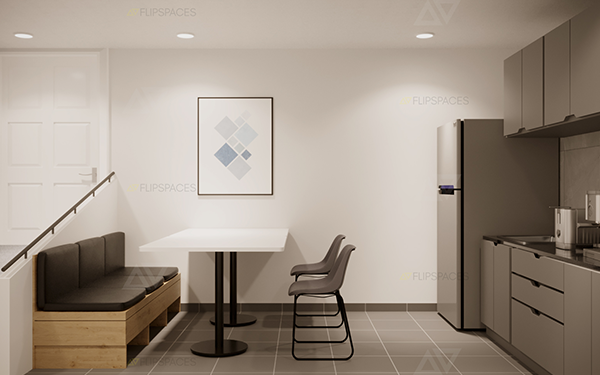
Framed Prints:
Framed prints are an excellent way to add a touch of elegance into your office interior design . You can choose prints that reflect your company's values or prints that add color and interest to a room. You can hang them in hallways, lobbies, or conference rooms.

Art Installations:
Art installations are temporary or permanent installations that are designed to create a specific atmosphere or evoke an emotion. They can be used to make a bold statement in a room or to create a specific ambiance. For example, you can install a chandelier made of recycled materials in a lobby to show your company's commitment to sustainability.
Custom Artwork:
Commissioning custom artwork is an excellent way to add a personal touch to your office space. You can work with a local artist to create pieces that reflect your company's values and brand. Custom artwork can be incorporated into various aspects of your office interior design, such as wallpaper, carpeting, or even furniture.
In conclusion, incorporating art into office interior design can create a more welcoming and comfortable environment for employees and visitors. Wall art, sculptures, murals, framed prints, art installations, and custom artwork are just a few ways to add art to your office space. When choosing art, it's important to select pieces that reflect your company's values and brand. With the right art, you can create a space that not only functions well but is also aesthetically pleasing.
Office interior design plays a crucial role in shaping the work environment of an organization. The design of an office space can have a significant impact on the productivity and well-being of employees. A well-designed office with the help of office interior design can inspire creativity, encourage collaboration, and foster a positive work culture. In contrast, a poorly designed office can lead to demotivation, dissatisfaction, and decreased productivity among employees. In this article, we will explore how office interior design can impact employee productivity and the importance of designing an office that meets the needs of its occupants.
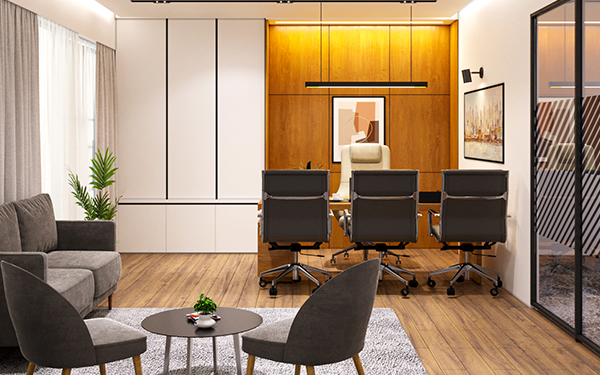
Lighting
Lighting is an essential element of office interior design, and it can significantly impact employee productivity. Natural light is ideal for office interior design spaces as it is known to boost productivity and reduce eye strain. Proper lighting can also help to reduce fatigue and headaches, leading to a more comfortable work environment. It's essential to ensure that the office interior design space has adequate lighting, and the lighting is positioned in such a way that it does not cause glare or shadows.
Ergonomic furniture
The furniture in an office can significantly impact the productivity of employees. Ergonomic furniture, such as adjustable chairs and desks, can improve posture, reduce strain on the back and neck, and increase comfort levels. A comfortable employee is a productive employee, and ergonomic furniture can go a long way in ensuring that employees are comfortable throughout the day.

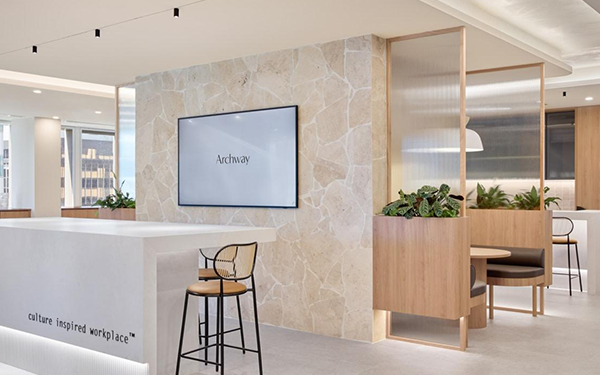
Color
The color scheme of an office interior design can have a significant impact on the mood and productivity of employees. Bright colors such as yellow and orange can create an energetic and vibrant work environment, while blue and green can create a calming effect. The color scheme should be chosen based on the type of work being done in the office. For example, a creative workspace may benefit from bright colors, while a more traditional office may require a more neutral color scheme.
Noise
Noise is a common issue in many office spaces and can significantly impact employee productivity. A noisy environment can lead to distraction and increased stress levels, leading to a decline in productivity. Acoustic panels, sound-absorbing materials, and white noise machines can all help to reduce noise levels in the office.
Flexibility
Flexibility is a critical factor in office interior design, as it can help to boost employee productivity. A flexible workspace allows employees to work in a way that suits them best, whether that be in a private office, open plan, or co-working space. Providing a range of workspaces can help to promote collaboration and create a more dynamic work environment.
In conclusion, office interior design can significantly impact employee productivity. It's essential to design an office space that is comfortable, functional, and promotes productivity. Elements such as lighting, ergonomic furniture, color, noise levels, and flexibility should all be taken into consideration when designing an office space. A well-designed office interior can lead to increased productivity, improved employee well-being, and a positive work culture.
Office interior design can have a significant impact on employee retention. A well-designed office can increase job satisfaction, boost employee morale, and improve productivity, all of which can lead to better retention rates. Here are some of the ways in which office interior design can impact employee retention:

1.Enhancing employee comfort:
An office that is designed with employee comfort in mind can have a positive impact on retention rates. For example, comfortable chairs, ergonomic desks, and adjustable lighting can make employees feel more comfortable and reduce the likelihood of physical discomfort and fatigue.
2.Creating a positive atmosphere:
A well office interior design can help create a positive work environment that encourages collaboration, creativity, and productivity. This can make employees feel more valued and engaged, which can increase their loyalty to the company.


3.Reflecting company culture:
Office interior design can be used to reflect the company's culture and values. This can help employees feel a stronger connection to the company and its mission, which can increase their commitment to staying with the company.
4.Providing a sense of ownership:
Employees who feel that they have a say in their workplace environment are more likely to feel invested in the company and more likely to stay with the company long-term. Allowing employees to have input into the office interior design can help provide them with a sense of ownership and pride in their workplace.

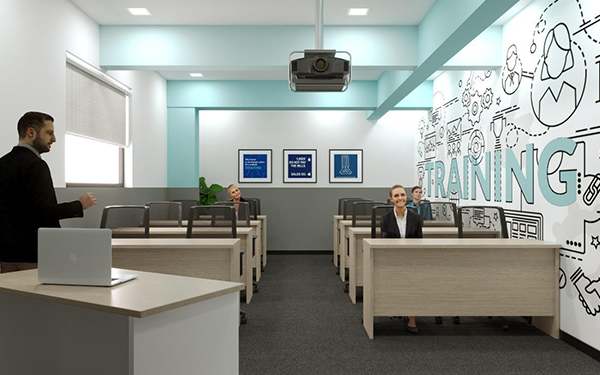
5.Improving productivity:
A well office interior design can help employees be more productive and efficient. For example, the layout of the office interior design can encourage collaboration and teamwork, while minimizing distractions and interruptions.
Overall, a well office interior design can have a positive impact on employee retention rates. By creating a comfortable, positive work environment that reflects the company's culture and values, companies can help retain their top talent and improve their overall performance.
Office interior design plays a significant role in employee health and wellness. A well-designed office by a commercial office interior design can enhance productivity, creativity, and employee satisfaction, while also reducing stress and absenteeism. In this blog, we will explore how office design can improve employee health and wellness.
The Importance of Employee Health and Wellness
The health and wellness of employees are crucial for the success of any business. It is a well-known fact that happy and healthy employees are more productive and less likely to miss work. A healthy work environment can also reduce the risk of workplace accidents and injuries. Moreover, employee health and wellness have a direct impact on a company's bottom line, with healthier employees resulting in lower healthcare costs and improved performance.
Office Design and Employee Health and Wellness
Office design has a significant impact on employee health and wellness. A well-designed office interior can improve air quality, reduce noise levels, provide natural light, and encourage physical activity, all of which contribute to better employee health and wellness.
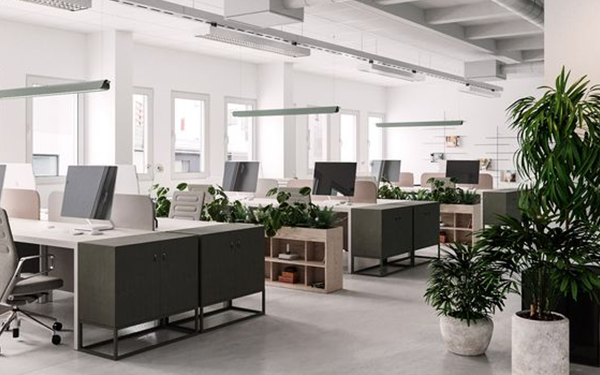
Here are some ways in which office design can improve employee health and wellness:
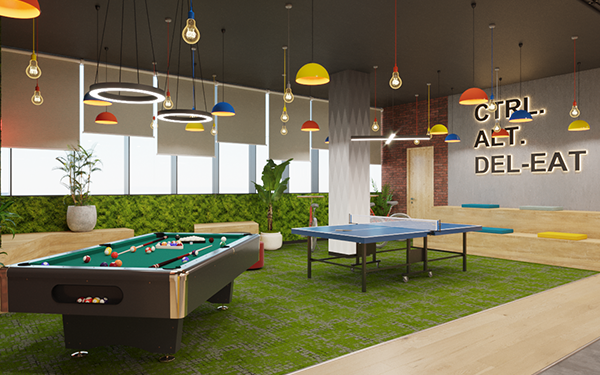
Encourages Physical Activity
Office design can encourage physical activity by providing designated spaces for exercise, such as gyms or yoga rooms. It can also promote physical activity by providing standing desks, walking workstations, and encouraging employees to take breaks and move around during the day.
Improves Air Quality
Poor air quality can lead to respiratory problems, allergies, and headaches, which can negatively impact employee health and wellness. Office interior design can improve air quality by using plants, air purifiers, and proper ventilation systems. Plants are known to absorb pollutants and release oxygen, making them an excellent addition to any office.
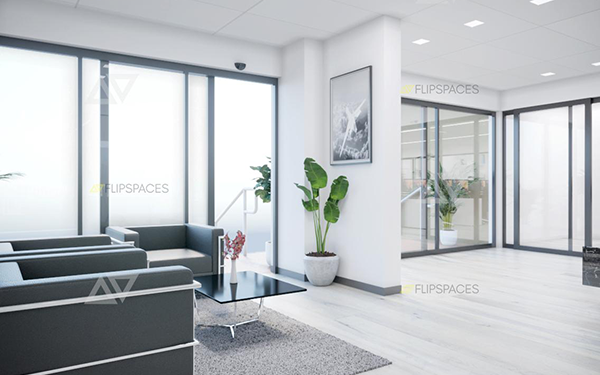

Provides Natural Light
Natural light is essential for good health and wellbeing. Exposure to natural light can improve mood, sleep, and productivity, while also reducing stress and anxiety. Office interior design can provide natural light by using windows, skylights, and light wells.
Reduces Noise Levels
Excessive noise levels can lead to stress, hearing loss, and poor communication, which can negatively impact employee health and wellness. Office design can reduce noise levels by using sound-absorbing materials, creating quiet zones, and providing noise-canceling headphones.
Provides Comfortable and Ergonomic Workspaces
Comfortable and ergonomic workspaces can reduce the risk of musculoskeletal disorders, such as back pain, neck pain, and carpal tunnel syndrome. Office interior design can provide comfortable and ergonomic workspaces by using adjustable chairs, desks, and monitors.
In conclusion, office interior design plays a significant role in employee health and wellness. A well-designed office can encourage physical activity, improve air quality, provide natural light, reduce noise levels, and provide comfortable and ergonomic workspaces, all of which contribute to better employee health and wellness. By investing in office interior design, businesses can improve employee satisfaction, productivity, and overall health, leading to a healthier and more successful workforce.